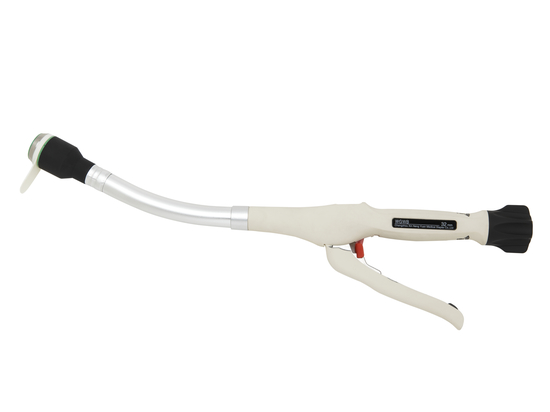
#Product Trends
Laparoscopic gynecological surgery is one of the fastest growing fields of surgical technology
Comparison of direct Trocar puncture and traditional Veress pneumoperitoneum puncture
Gynecological laparoscopic surgery is one of the most rapidly developing fields of surgical technology. However, the complications of laparoscopic surgery cannot be ignored. In addition to the difficulty of the operation, most of the complications of laparoscopic surgery are related to air needle and Trocar puncture. In particular, the operation as the first puncture into the abdominal cavity is the first step in a successful operation, and it is also the most dangerous step in the operation, because the umbilical puncture point commonly used in surgery has a special anatomical relationship with the corresponding large retroperitoneal blood vessels. , the first step operation error does not affect the surgical process and can lead to serious consequences, often making beginners daunting.
Direct Trocar puncture for first cannula puncture. According to the needs of the operation, the patient is placed in the bladder lithotomy position or supine position. After successful general anesthesia, routinely disinfect the towel, disinfect the umbilical hole again, and pull two towel forceps on the edge of the umbilical hole about 2 cm away from the umbilical hole. The skin and subcutaneous tissue are about 1 cm wide, and in the middle of the umbilicus, use a scalpel to pick up the vertical or horizontal line (select the long diameter of the umbilicus) to make a full-thickness incision of about 1-1.2 cm, and use the back of the scalpel carefully. Probe the incision to further detect whether it enters the abdominal cavity; in the state of pulling the towel forceps, hold the 10 mm Trocar and slowly insert it vertically from the incision to remove the Trocar core, and use the laparoscope to check whether it enters the abdominal cavity and under the incision again under direct vision. Whether there is any injury or bleeding; then connect a human inflatable tube to establish a pneumoperitoneum of 13-15 mm Hg, place a human operating hole under direct vision of the laparoscope, and perform the rest of the operation. Cannula, absorbable thread or No. 1 silk thread is used to suture the peritoneum and subcutaneous of the umbilical incision, and the skin incision is pasted with a Band-Aid. The time from surgical incision of the skin to successful inflation was recorded.
The traditional Veress pneumoperitoneum was used to establish pneumoperitoneum followed by 10 mm Trocar puncture. The preoperative preparation was the same as that of the observation group; two towel forceps were about 2 cm away from the umbilicus, and the skin and subcutaneous tissue were pulled horizontally with a width of about 1 cm, and the skin and subcutaneous tissue were incised at the center or edge of the umbilicus (usually at the edge) with a sharp scalpel. About 1 cm, the Veress pneumoperitoneum needle is perpendicular to the skin puncture until there is a sense of breakthrough, and then the shake test or drip test is performed to confirm that it has entered the abdominal cavity, then connect Co, pneumoperitoneum machine, and establish pneumoperitoneum up to 13~15 mm Hg, The pneumoperitoneum needle was pulled out, 10 mm TroC was punctured vertically into the abdominal cavity from the incision, and a laparoscopic was placed under direct vision to detect the incision.
Whether there is any injury or bleeding. Do the rest of the surgery. After the operation, the Co gas was evacuated first, then each puncture cannula was pulled out, the umbilical incision was sutured with absorbable thread or No. 1 silk thread for 1 subcutaneous needle, and the skin incision was pasted with a Band-Aid. The time from surgical incision of the skin to successful inflation was recorded.




